Sometimes I wished I played a pocket-sized kazoo or harmonica. A violin, a guitar — even a tuba? — at least they all have handy traveling cases. With as itinerant a life as I have had, toting around a grand piano between continents and coasts has been a feat. Weighing in at just under a ton, my current (and true love) piano is definitely the heaviest member of my family. I have been trying to keep my musical life alive for half a century now, a piano of some description in tow for most of these years, but my current piano is a gift that was revealed over time.
I remember a so-so upright in my very early years — you can see it in the background (to the right) of this January 1969 photo. That said, the star here is my mom, with her Sassoon bob, cat glasses, mini skirt and thigh high boots — sat in the classic Tulip Chair by Aero Saarinen. I showed her this photo recently and she confessed “Oh my goodness, I was so high when that photo was taken. I ended up spending about two hours in the bathroom obsessively wiping away all the water marks from the mirror and tiles!”. Welcome to the 60s!
The next piano came from my grandfather Pappo. When he passed, he left the piano to his daughter-in-law, (my mother); a Steinway grand that they had used in the old days to write vaudeville songs for the intermission shows at the family’s chain of movie theaters all across the Midwest, in the early days of cinema. The theater chain was started by my great grandfather Moses Finkelstein, and included Twin Cities movie palaces, as well as smaller theaters in little towns across Iowa — apparently those towns had a particular love for Lucille Ball and Ma & Pa Kettle. I’m sure the vaudeville shows were memorable!
I can remember sitting on my grandfather’s knee, in front of the keyboard. This photo shows the same past-time with my cousins, not me, but I remember this in that way you would if your grandfather died when you were three and all you could remember of him was bouncing on his knee while he played show tunes on the piano at the lake house, outside of the Twin Cities, where we fished off the end of the dock, and hand-cranked fresh peaches and cream into ice cream.

My mother played the piano and had been a music major in college, so that’s how she became the beneficiary of this instrument, and how the first Steinway grand piano materialized in my childhood home. It was on this piano that my interest in the instrument began, when I was about 9 or 10. There was a beginner’s book in the bench, which I started deciphering — my mom would poke her head out of the kitchen door from time to time with some guidance and encouragement.
Around this time cracks in my idyllic childhood began to surface. My father sold his theaters, and soon after, my childhood home in Georgetown, where I first started to play. In this photo of my mom, just two years after the first photo of her, you can see the tail of Pappo’s grand piano behind her in the foyer. Even here, the cracks in the joy look palpable.
One day I came home from school and told my mom “There’s a little girl at school who is 6 and plays piano better than you do, mommy. She wears her hair in these cute little braids”. I went to an International School in DC at the time, and the little girl, Ana Maria Vera, was half Dutch / half Bolivian. My mom scoffed, until a few weeks later she saw a huge spread about her in the Washington Post: she had played for Jimmy Carter at the White House (bringing him to tears), and performed a concerto with Authur Fiedler and the Boston Pops. The article mentioned Ana Maria’s piano teacher, Ylda Novik, being a star teacher in the DC area, and next thing I know I’m at Mrs Novik’s house having an audition, and then being sent for beginners lessons with her assistant. Lo and behold, this assistant was Ana Maria’s mother, Marianna. Every week, I went to Ana Maria’s house for my lesson, and afterwards Ana Maria and I got to play together while my mom observed Marianna teaching so she could learn the tricks of the trade. Mrs. Novik wanted a second assistant and had invited my mother to join the team.
It was only about 6 months before I was ready for lessons with Mrs. Novik; I had progressed remarkably quickly and won my first local piano competition — where the prize was playing a Mozart concerto with an orchestra. I would practice in the morning before school as well as during dinner prep. It kept me focussed while in the background, my family upheaval continued. My father was having a “mid-life crisis” apparently. His parents blamed my mom, and her parents blamed my dad. There was a lot of finger-pointing going on. As for me, my parents pulled me out of the International School where I had met Ana Maria, my father started disappearing for long stretches of time, and money for basics became scarce — by now, luckily, my mother had started teaching piano full time and took on a bunch of lodgers so she could pay the rent. I immersed myself increasingly in the piano music and the community of players that I got to meet at Mrs. Novik’s. Of course Ana Maria was there, but so was Brian Ganz — a star Chopin player who, more importantly, introduced me to Ray Bradbury short stories — and had beautiful eyes! Marcy, Tommy, Neil, all these incredible players became my community of friends, and I felt like I belonged.
One morning when I got up early to practice (I’m sure the lodgers loved hearing me practices scales at 5:30 AM!), my mother let me know my father was leaving her for another man. This was in the early 70’s, long before Pride, and well before AIDS. That also happened only a few days after our lovely pet whippet, Victoria, had died of cancer. Loss upon loss. I practiced my scales even more furiously. In 3rds, 6ths and 10ths for good measure.Things were rough, but Chopin, Brahms and Bartok were a great distraction.
But that’s also more or less when the devastating news came that Mrs. Novik had liver cancer. It progressed quickly. I had only been studying with her for about 2 years — such a brief period for something that had impacted so deeply on me.
This photo was taken of all of us (her piano students), the day that the local classical radio station, WGMS, played recordings we had made during an hour of air time we had purchased as a group. WGMS thought we would be choosing programming; but no, we all went into the studio and one by one, we recorded a piece each, so it could be broadcast for Mrs. Novik to hear from her hospital bed. I remember playing Prokoviev — a Vision Fugitif (dissonant and haunting — Fleeting Visions, so apt). In the photo above, I’m in the front row, second to the left, in a blue skirt. I look pretty miserable, and I was. Ana Maria is there in a striped purple turtle neck, 2nd row center. Brian is 2nd to the left in the top row. A big 16.
Mrs. Novik passed away not long after that group student photo was taken. Where to send all these gifted young players? We were divided up between the area’s best teachers. Ana Maria and Brian were accepted by Leon Fleischer — a legend in the piano world; next thing I remember, I was shuttled over to a piano teacher in Baltimore. Nelita True went on to become one of the most famous teachers in the country. And her 2 assistants, Alvin and Alan Chow — who taught me piano technique — are also legendary teachers now at Eastman Conservatory and Oberlin College. But this was a dark time for me. I had lost my piano community, my father was enjoying a very different life now (I felt more like a friend from a past life than his daughter), my beloved dog was in doggy heaven, I had changed schools to a suburban environment which was a hard place for me to fit in, and the piano technique lessons were tedious. It wasn’t long before I figured out my escape, and went off to boarding school with a full financial aid package, offered to me, no doubt, because of my prowess at the keyboard. The “piano advantage” got me all the way through college and to music conservatory in Paris. Piano lessons continued throughout this time, but it was increasingly a sideline for me, like a form of personal therapy, not my ambition to become a professional musician.
After my year at the conservatory in Paris, I stayed in Europe for 25 years, and two pianos came into my life there. In Portugal, my partner Carlos gifted me an upright Steinway. I can’t remember where it turned up, but we sent it to a workshop for repairs, and after we broke up, he was generous enough to let me bring the upright with me from Lisbon to the UK, where I treasured it for many years.
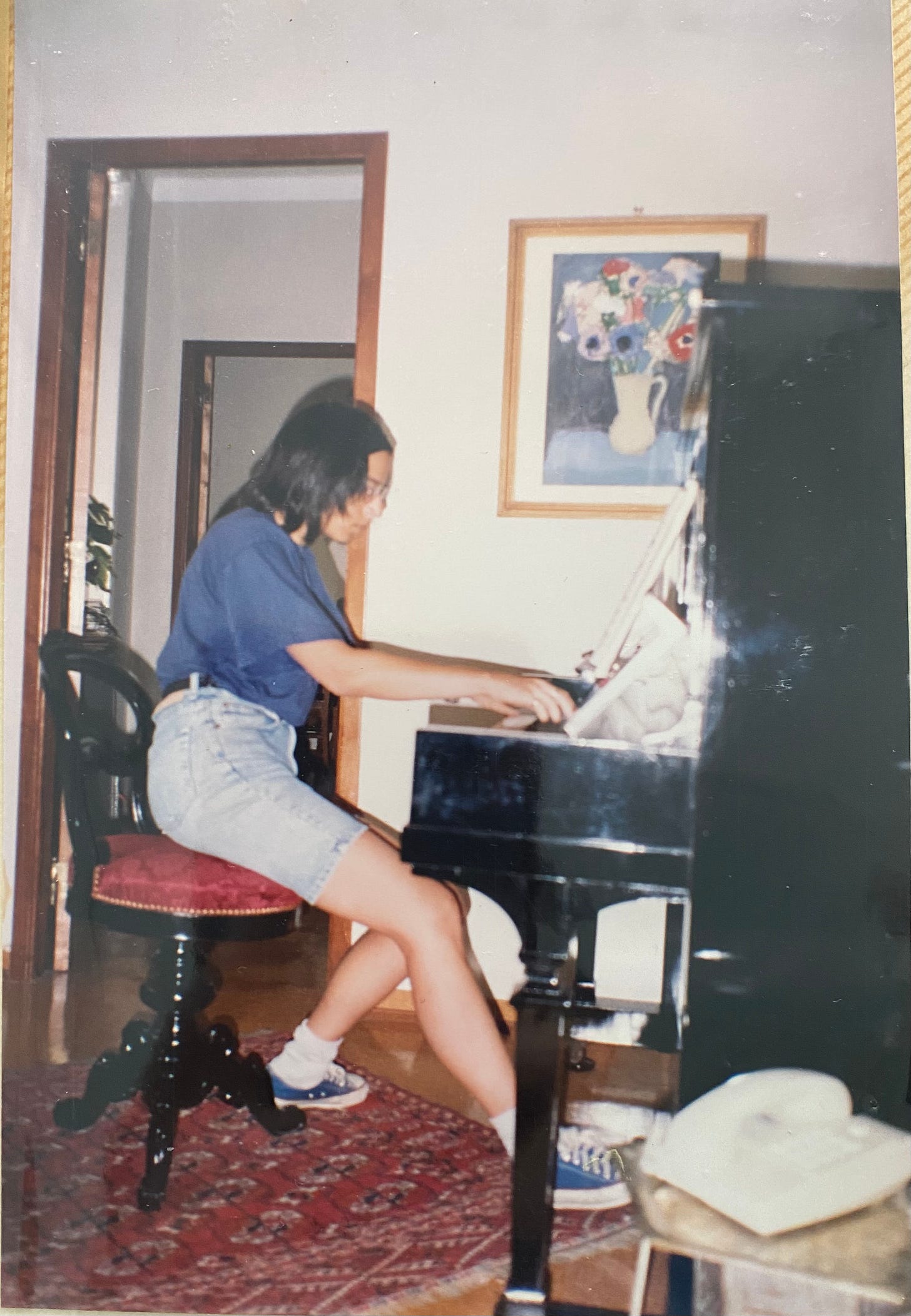
The next piano came about when my young daughters started their piano lessons — still in Brighton. With my background, I’d chosen my daughters’ teacher very carefully. She was an elderly woman, in her 80’s, living alone with a colorful and chatty parrot and a greenhouse full of exotic orchids that enchanted my daughters (perhaps moreso than their lessons!). She made certain comments that would always make my head spin: “Ah yes, my piano teacher could remember meeting Brahms.” Wait what? Yes, when she was a young girl, her teacher was elderly, but had studied, as a young girl, with Clara Schumann — at whose home Brahms was a regular house guest. This teacher, and her sister, had been the pianists of the day in the UK, quite the phenomenon, until she had suffered a tendon injury and stopped playing, devoting herself instead to teaching. The head of the London conservatory had personally chosen a piano for her sister. And now her sister had passed away, and the piano was in probate.
I couldn’t pass up this opportunity. I sold the upright Steinway to a friend whose daughter was also studying with this teacher, and managed to upgrade to the grand piano. The piano needed some work but had a sweet sound, and it was so wonderful to have a grand piano to play again, and for my daughters to learn on it.
A couple more years passed, and we decided to move to LA. Our entire household of contents were packed into a container, the piano was crated, and all of our things made their way by sea, through the Panama Canal, and a few months later were delivered to Los Angeles.
But things didn’t quite pan out as we had hoped in LA. We moved about 5 times in succession, each time to a more modest abode (echoing a pattern not very different to what I’d experienced as a child when my father’s life had abruptly changed course) — by then I had the piano movers on speed dial. Finally, my husband and I separated, and I moved the piano to yet another rental deep in the Santa Monica Mountains, near Malibou Lake and the Old Place, a charming saloon where the old post office had been. A couple years later, this location became the epicenter of the Woolsey Fire, where the house was caught in its raging path as it charged through the Santa Monica Mountains all the way to Malibu and the Pacific ocean. Thankfully, the house didn’t burn to the ground, but this video shows what happened to the piano:
The bad news was that I found myself basically homeless the day of the Woolsey fire, but the good news was that insurance money was going to cover the restoration of the instrument! In the aftermath of the fire, the only thing I was concerned about was the piano. I found a Russian piano restorer who came to see the piano: “Jennifer, this is a disaster,” he said in his thick Russian accent, “But we can fix it. You called me just in time. This is a very special piano,” he said. I looked at him, unsure how he could see its quality under the coals. “It’s a German Steinway, I can tell by the shape of the bolts. Art case, rosewood. This piano is going to come out amazing”

Gene got to work on the piano. As he took apart the piano he found evidence of its origin with little rounds cut from a German newspaper, padding the key-beds. Meanwhile I paid the fee for Steinway to send me the piano’s history. Gene was right, it was built in Germany in 1912. Hamburg. According to the Steinway archives, it was shipped to the London Steinway showroom as soon as it was completed, in 1914 I believe it was, and went through both wars in the UK…
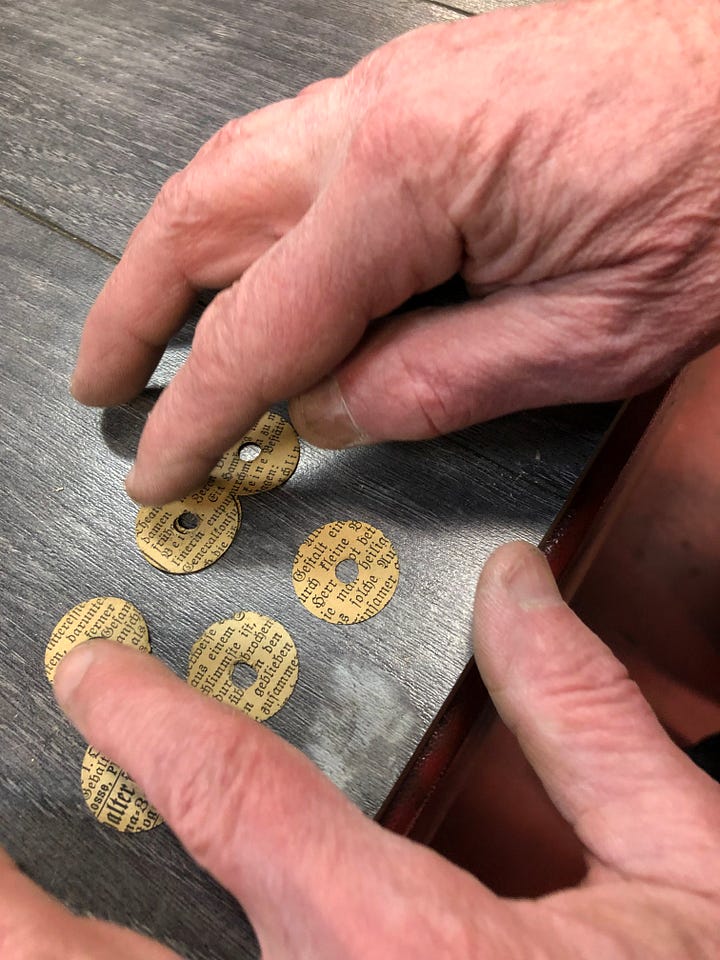

A few months later the piano was ready, and Gene proudly had it delivered to the place I rented in Echo Park: after the fire I decided that 10 years in the mountains was enough; it was time for a change. When the piano arrived, it was perhaps the greatest gift I’ve ever received, and this joy far outweighed the experience of losing a home to the fire and all the chaos that ensued. The instrument is absolutely amazing to play, one of the most beautiful Steinways I’ve ever touched.
Inspired, I started lessons again, with Anthony Cardella, an exceptional player and PHD student at USC. I went back to practicing daily, learning pieces that I’d always wanted to tackle. I was in love.
Of course, when it was time to move to Maine, the piano too had to make its way cross country — yet another move (hopefully its last!). It took a separate trip from the rest of our contents. It was shipped to a piano store in Portland and waited there several months until our foundations were repaired and there was no chance of it falling through the floor into the cellar!
The day finally came that the piano movers drove it up from Portland and put it into its place. I was overjoyed. A local tuner completed the job.

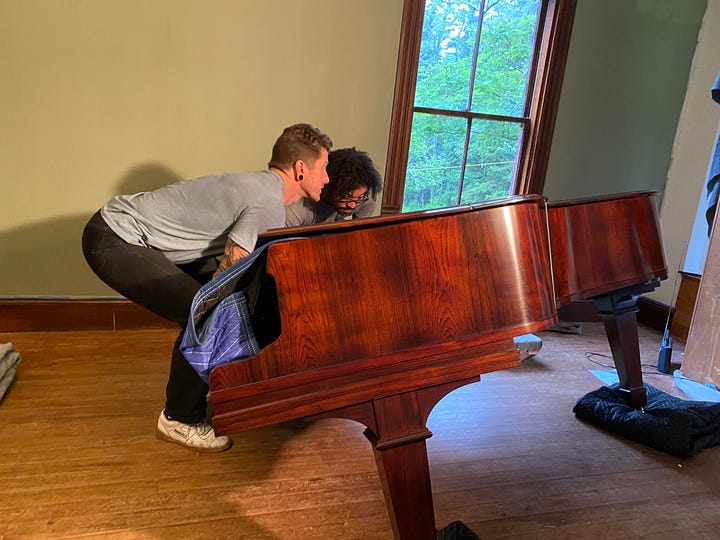

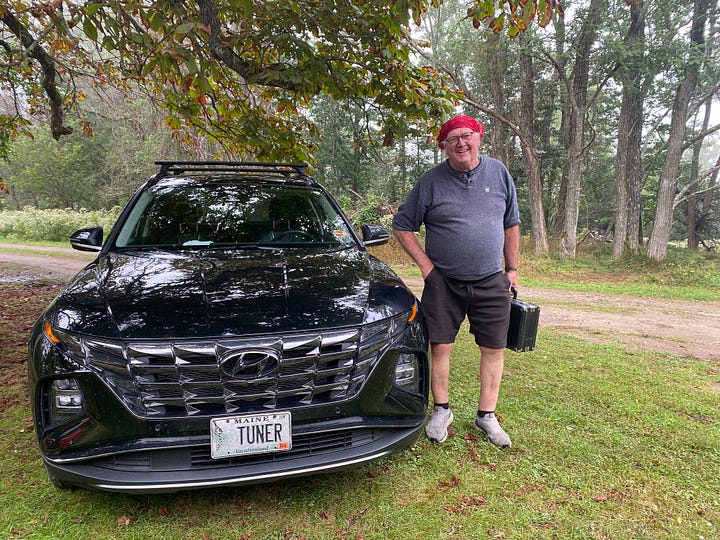
Arriving on the island, with more time to devote to diverse projects, I put the word out that I would be happy to teach piano lessons — as there are limited options in the area. Now, I have two piano students (an adult and a child), and am loving giving them support. I am also looking for musicians to form a piano trio. The piano story is one of those things that not many people know about me — it is mostly a private/personal joy of mine.
The piano has settled, as I have, in its new home, where I love to play Debussy Jardins Sous la Pluie, Pagodes, Soiree en Grenade etc. This winter I called Tony, my teacher in LA, and he helped me select some cozy winter repertoire (a Brahms Intermezzo and a painfully beautiful piece called In the Mists by Janacek — exploring loss and grief). I am so grateful that I have this instrument, that it survived two world wars; it survived being shipped from Germany to the UK, then to California; that it survived the fire and was restored, and made it through another exodus across America… And I’m also so grateful that I now have the space and time in which to make music and teach. This musical journey has navigated me through joys and sorrows for decades now, and hopefully decades to come — and no, I won’t be trading it in for a pocket-sized kazoo, harmonica, or even a cello. It’s my true love piano, and with any luck, we will stay together forever, through thick and thin…







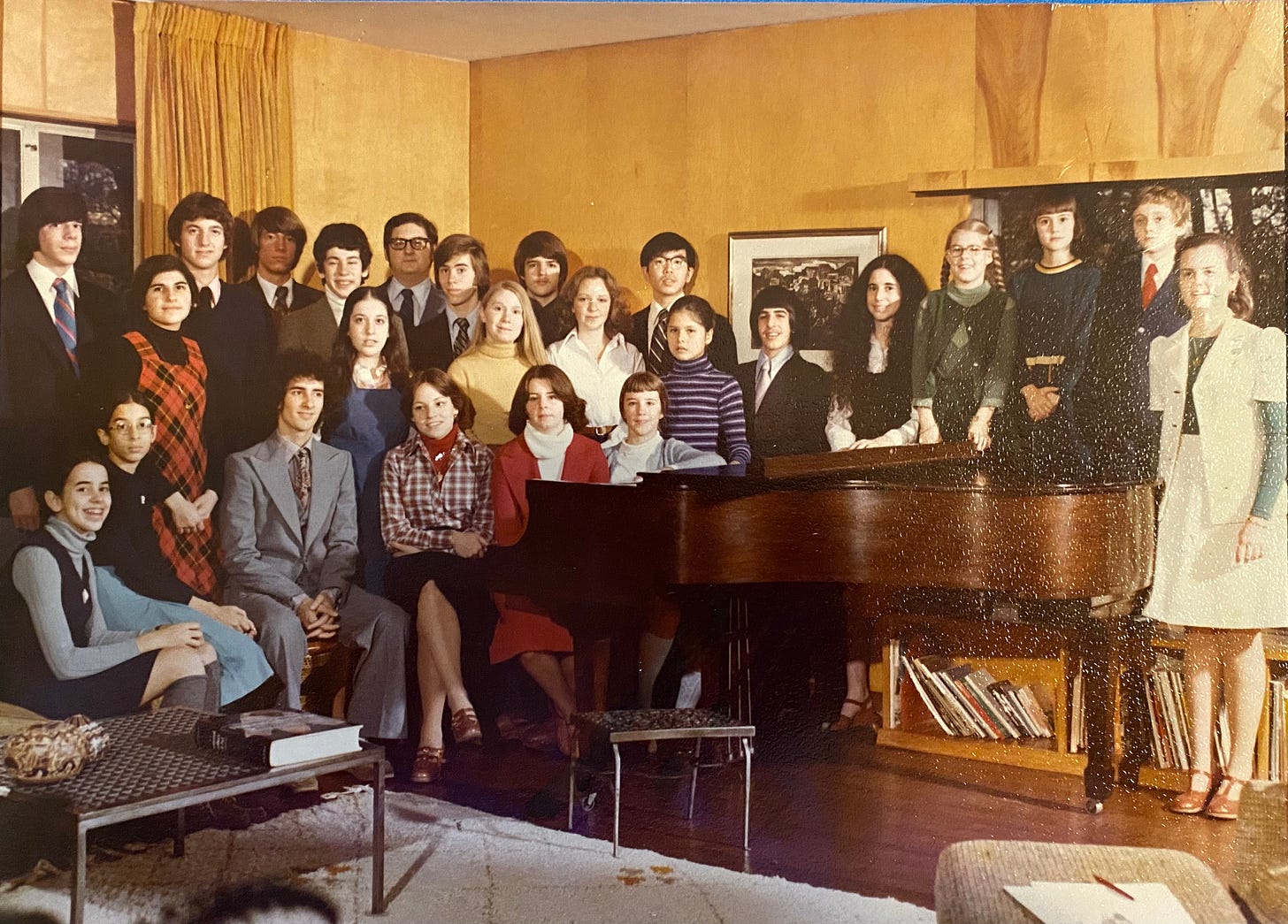
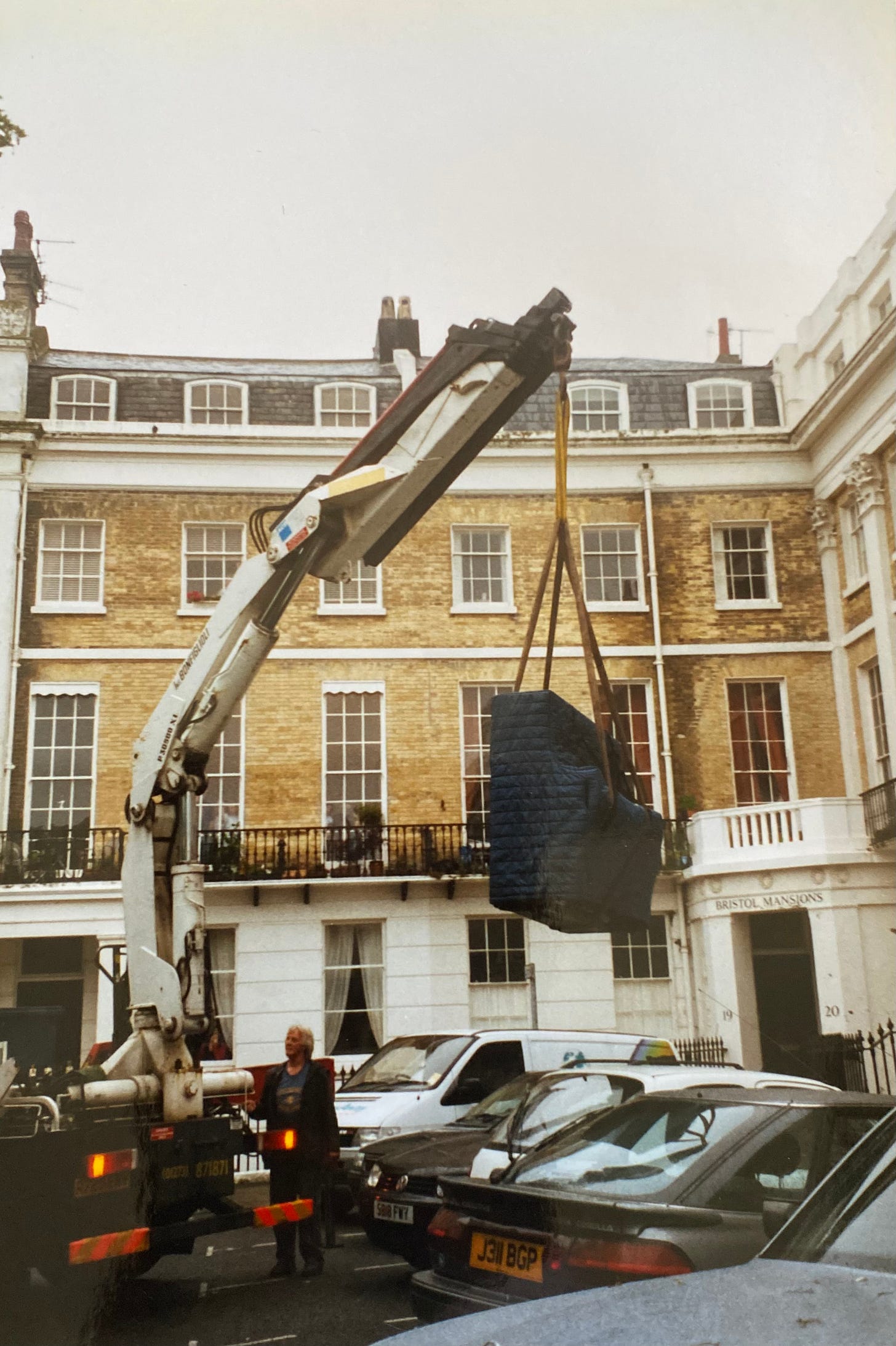
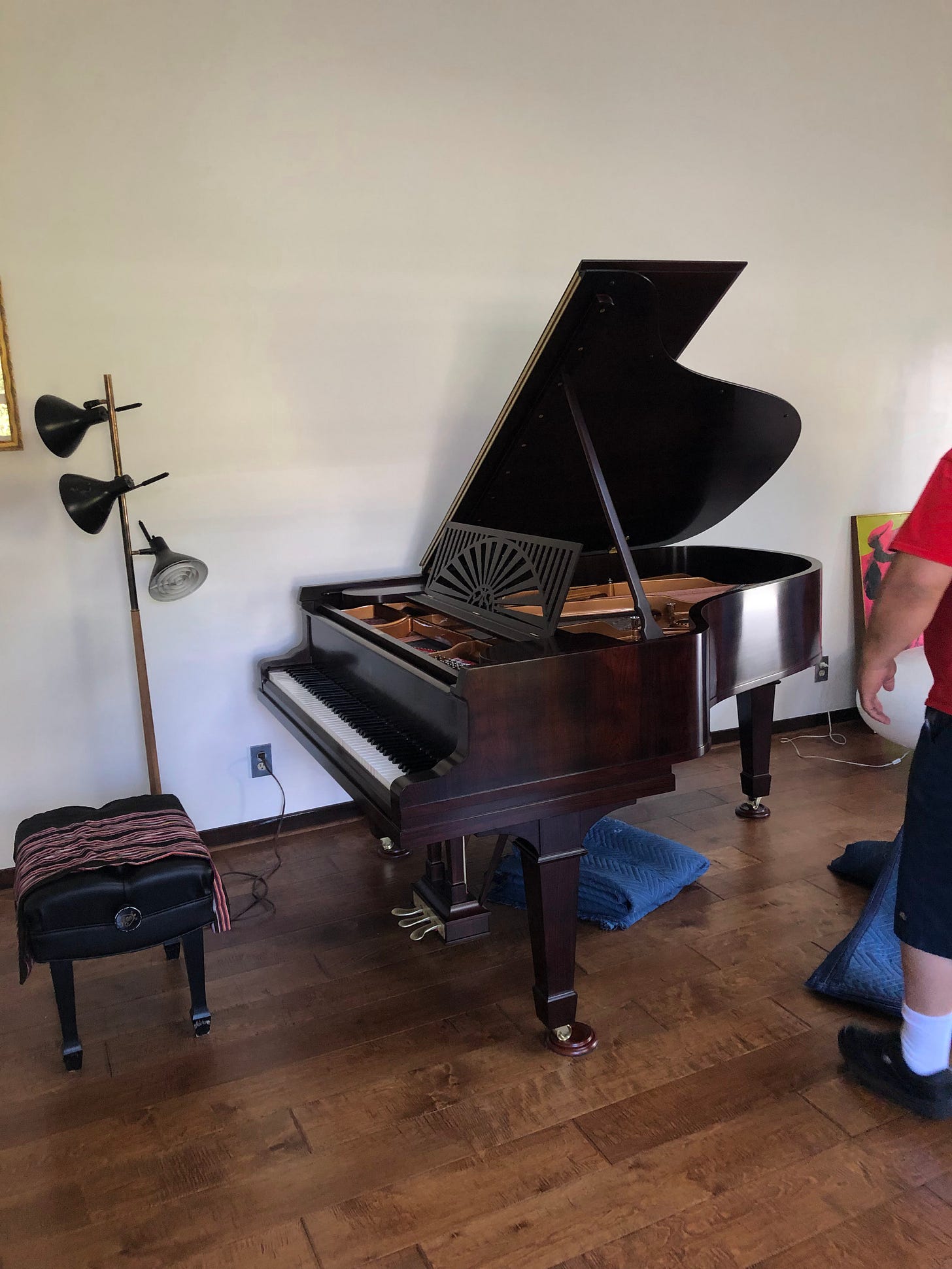
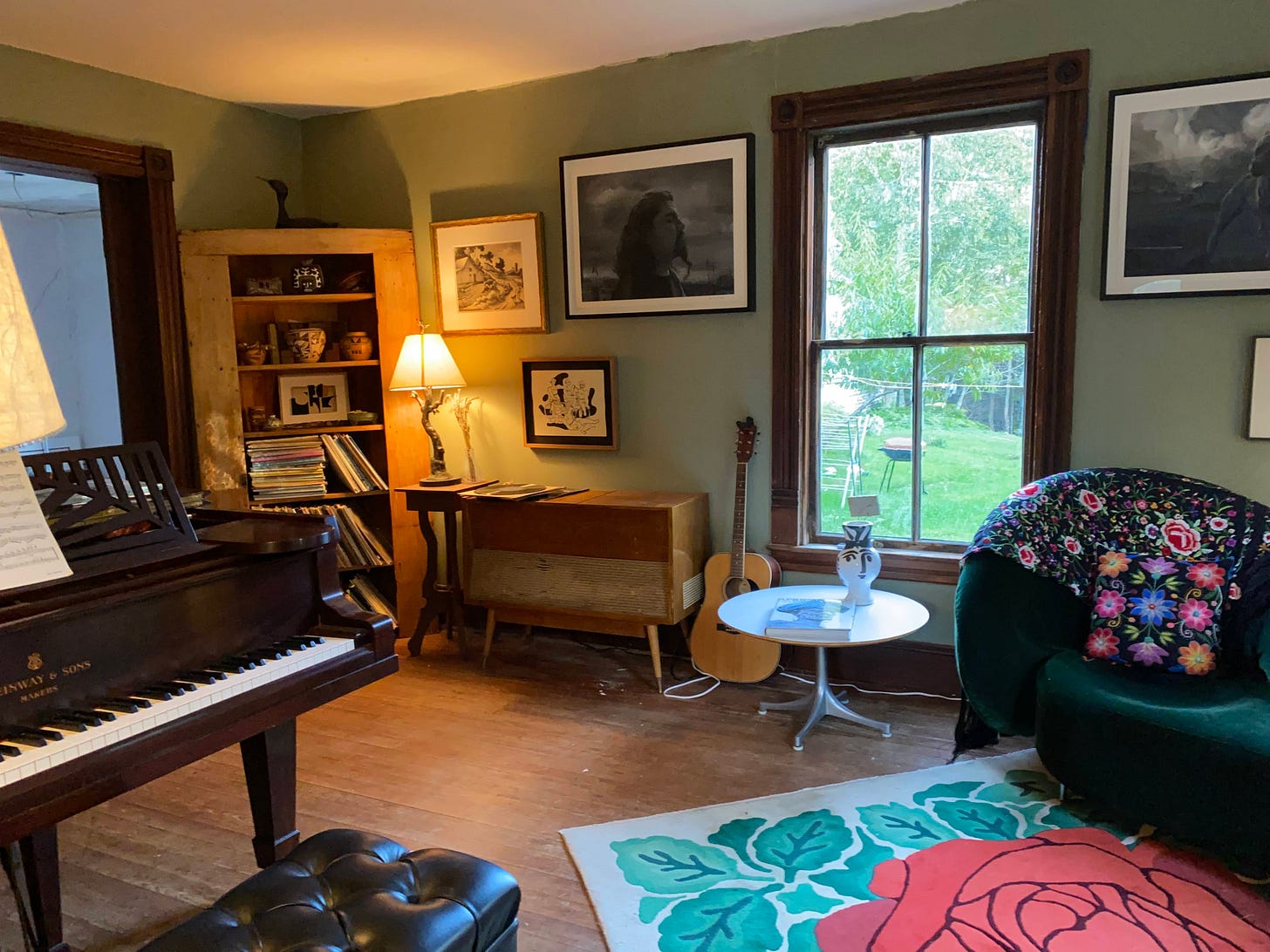
What an amazing story, Jennifer.! Thanks for sharing it with us. You transported us from your childhood through the present day... and we love you and your grand piano. Hurrah!